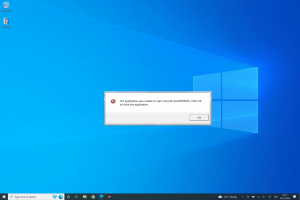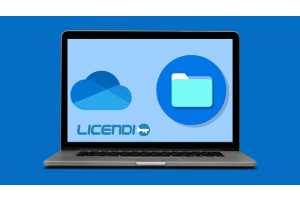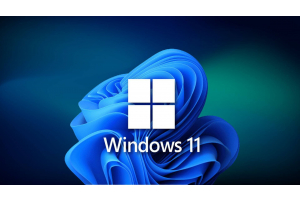Microsoft SQL Server 2019: Everything you need to know!

The first thing to know about Microsoft SQL Server 2019 is that it is a relational database management system (RDBMS). Take your business/organisation to the next level of IT analytics application by using Microsoft SQL Server 2019, which also helps you with transaction processing and evolves your business intelligence.
What is the strength of the software, where can it help you? It is most effective with specific databases, because SQL Server was developed precisely for this purpose, as its acronym "Structured Query Language" explains.
In the following we will explain in more detail what a Microsoft SQL Server is and how you can use it to your advantage.
Why is SQL Server used in the corporate world?
With Microsoft SQL Server you can store data and manage information, among many other applications. Regardless of what information is stored, whether it is confidential customer information, bank data, personal data, etc., you benefit from a very high standard of security.
Another great advantage of SQL Server is the high speed of data processing. It also facilitates the sharing of data between computers and devices connected to the same network, which speeds up large projects. It is a system that makes it possible to manage a large amount of confidential data quickly and efficiently on a large number of computers and devices.

What changes from SQL Server 2016 to 2017 and to 2019?
SQL Server 2016 Enterprise/ SQL Server 2016 Standard
• Always encrypted: All data you process via SQL Server is encrypted with a key that is made available to users. This security measure encrypts and protects your data.
• Real-time operational analysis: your system is optimised in real time to optimise the workload through a study of your needs and regular use of the server.
• Active and constant data masking: If you work with very sensitive information such as credit cards and other equally sensitive information, SQL Server 2016 offers an additional security option, namely active and constant data masking, so that only authorised persons can see this data.
SQL Server 2017 Enterprise/ SQL Server 2017 Standard
• Self-optimisation: Constant performance and system analyses as well as the implementation of improvements ensure that the server operates under optimal conditions.
• Windows, Docker and Linux: Added the possibility to use SQL Server 2017 with the previously mentioned operating systems.
• Graphical database visualisation: SQL Server 2017 now also offers the option of visualising databases and their interconnections using graphs that represent the nodes and edges of the various databases.
SQL Server 2019 Enterprise/ SQL Server 2019 Standard
• UTF-8 support: With SQL 2019, you can use the UTF-8 data encoding method. Export, import and collect database and column-level data with UTF-8 like never before.
• Big Data Cluster: Allows you to manage multiple scalable clusters of SQL Server, Spark and HDFS containers running on Kubernetes simultaneously. It allows you to process, read and analyse incoming Big Data. It combines and analyses high-quality relational data with large amounts of Big Data in a simple and efficient way.
• Improved security: As the security of the data in the databases fed into SQL Server is known, an additional security measure has been implemented in SQL Server 2019. In addition, access to and security of SQL Servers are guaranteed by certificates distributed by the company at its own discretion. For this reason, certificate management is included for the SQL Server Configuration Administrator user.
SQL Server 2019 Standard and Enterprise - what changes?

In the following table we see how SQL Server Enterprise offers three additional benefits to its users: Enterprise Data Management, Advanced Security and ACBI.
SQL Server Standard 2019 vs. SQL Server Enterprise 2019 comparison table
Requirements for Microsoft SQL Server 2019
Technical
• AMD- or Intel-based x64 processors (AMD Opteron, Phenom, AMD Athlon 64, Intel Xeon with native support for EM64T)
• At least 1 GB system memory (Standard and Enterprise). 4 GB or more recommended.
• CPU clock frequency: x64 1.4 GHz or higher. 2.0 GHz recommended.
• The data quality services require 2 GB of additional system memory to function optimally.
Software
• .NET Edition 4.6.2 or higher required to run SQL 2019
• For a complete installation, 6 GB of free disk space is required.
If you have any further questions, please do not hesitate to contact us by clicking here.
Also, here is our YouTube channel if you would like to see more of our content on operating systems (e.g. Windows 10 Pro) or Office software (e.g. Office 2019 Professional Plus).




